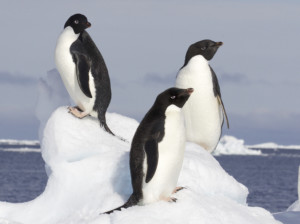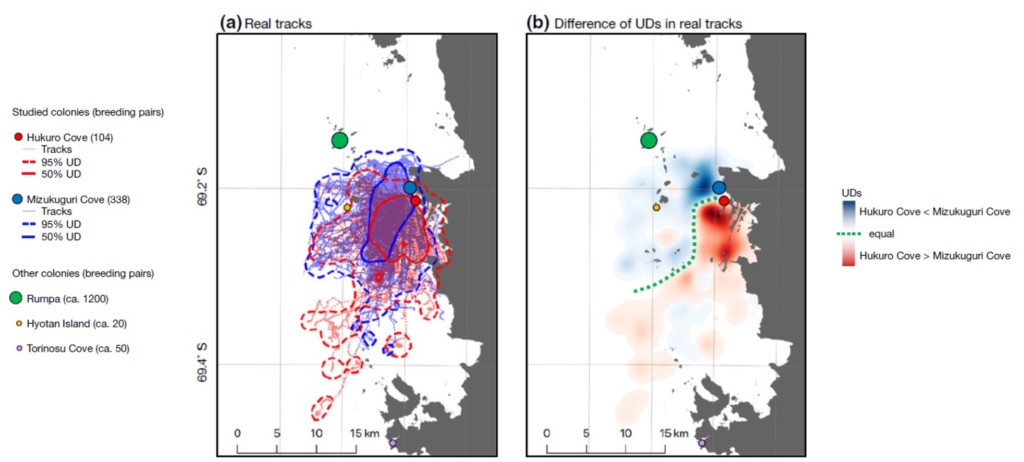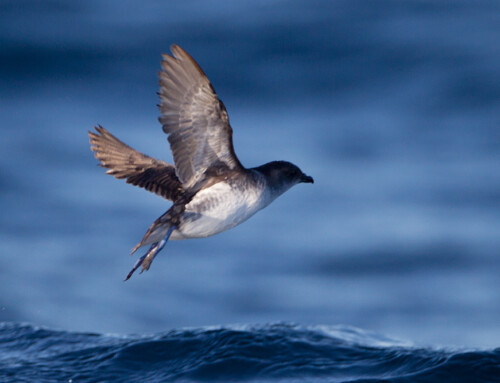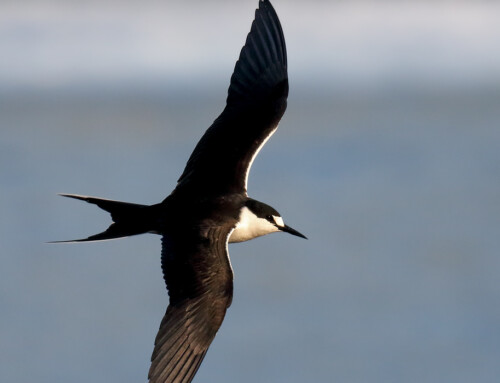 LINKED PAPER
LINKED PAPER
Inter-colony foraging area segregation quantified in small colonies of Adélie Penguins. Ito, K., Watanabe, Y. Y., Kokubun, N., & Takahashi, A. 2021. IBIS. DOI: 10.1111/ibi.12837. VIEW
When seabirds from different species forage in the same area, they will often collect food in different ways to avoid direct competition. Some species might prefer other prey types, dive to specific depths, or forage at certain times of the day (Trivelpiece et al. 1987). But what if the foraging birds belong to the same species? They will probably show similar behaviors and cannot easily avoid competition in these ways. Instead, neighboring colonies of the same species might show spatial segregation where each colony forages in a specific area (Bolton et al. 2019). A recent study investigated whether this occurs between two colonies of Adélie penguins (Pygoscelis adeliae) in Antarctica.
GPS loggers
The researchers compared the foraging behavior of penguins from the Hukuro Cove colony and the Mizukuguri Cove colony that are about two kilometers apart on the coast of eastern Antarctica. Using GPS loggers, the researchers mapped 504 foraging trips by 48 penguins. There were no significant differences between the colonies in terms of time of the day, trip duration, maximum distance from the colonies or dive depth. These results indicate that penguins from both colonies foraged in similar ways. But perhaps there was spatial segregation? Indeed, although there was some overlap between the colonies, the analyses revealed significant spatial segregation. In general, birds avoided swimming in front of the other colony.

Figure 1. (a) Foraging trips of Adélie penguins from Hukuro Cove (red) and Mizukuguri Cove (blue). (b) Statistical analyses of these foraging trips show that the colonies do not significantly overlap in foraging areas.
Halo
Interestingly, the bigger colony (Mizukuguri Cove with 338 pairs) seemed to constrain the foraging area of the smaller colony (Hukuro Cove with 104 pairs). This pattern can be explained an expanding halo of depleted food around a colony (Ashmole 1963). As seabirds forage in the waters surrounding their colony, they create an increasing area of low prey abundance. The bigger the colony, the larger the halo will be (Jovani et al. 2016). If this halo overlaps with the foraging range of a smaller colony, it forces individuals from the smaller colony to avoid the over-used halo zone. There is an even bigger colony in eastern Antarctica (Rumpa with 1200 pairs). The area around this colony overlaps with the potential foraging range of the Hukuro Cove and Mizukuguri Cove colonies. However, the penguins from the smaller colonies never ventured into the area of the Rumpa colony, which is in line with the expanding halo explanation. Who knew it was this crowded in the Antarctic waters?
References
Ashmole, N. P. (1963). The regulation of numbers of tropical oceanic birds. Ibis 103: 458-473. VIEW
Bolton, M., Conolly, G., Carroll, M., Wakefield, E. D., & Caldow, R. (2019). A review of the occurrence of inter‐colony segregation of seabird foraging areas and the implications for marine environmental impact assessment. Ibis 161: 241-259. VIEW
Jovani, R., Lascelles, B., Garamszegi, L. Z., Mavor, R., Thaxter, C. B., & Oro, D. (2016). Colony size and foraging range in seabirds. Oikos 125: 968-974. VIEW
Trivelpiece, W. Z., Trivelpiece, S. G., & Volkman, N. J. (1987). Ecological segregation of Adélie, gentoo, and chinstrap penguins at King George Island, Antarctica. Ecology 68: 351-361. VIEW
Image credits
Top right: Adélie penguin (Pygoscelis adeliae) | Gregory “Slobirdr” Smith | CC BY-SA 2.0 Wikimedia Commons
Blog posts express the views of the individual author(s) and not those of the BOU.
If you want to write about your research in #theBOUblog, then please see here




